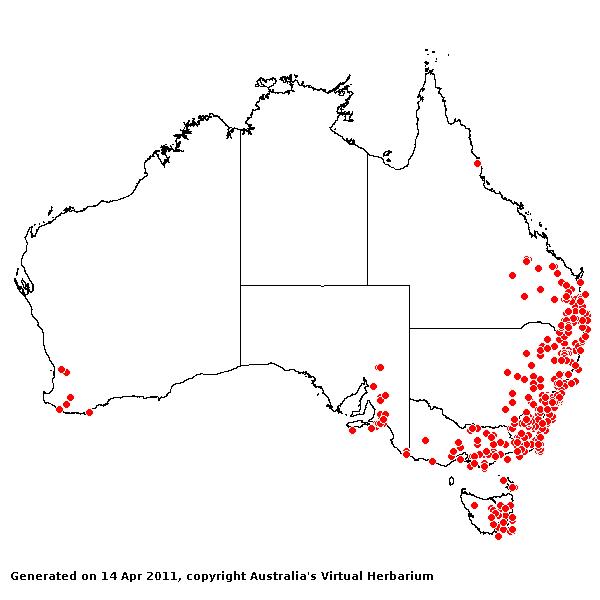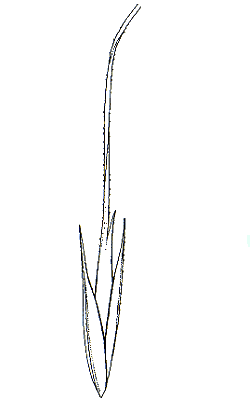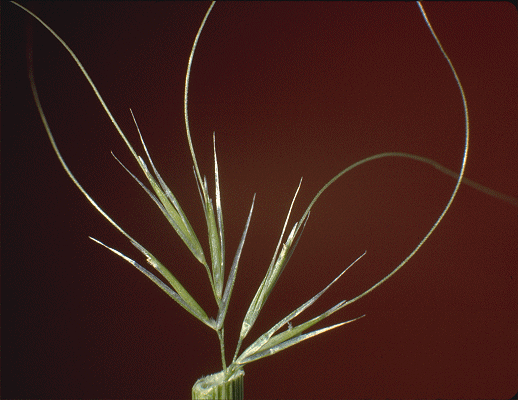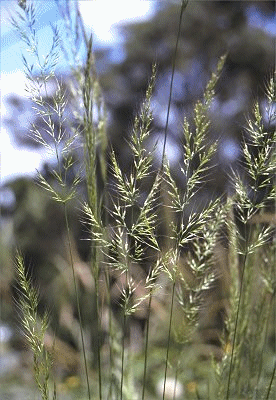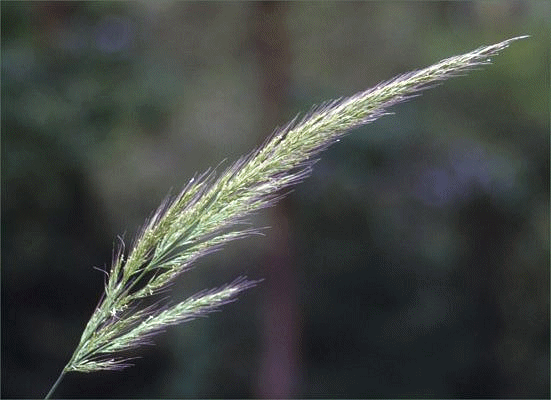Dichelachne micrantha (Cav.) Domin. Biblioth.
Bot. 85: 353 (1915).
Classification. (GPWG 2001) : Subfamily Pooideae.
Tribe Poeae.
Basionym and/or
Replacement Name: Stipa micrantha
Cav., Icon. 5: 42, 467, f.2 (1799).
Type of Basionym or
Protologue Information: HT: L. Nee s.n., Apr 1793, Australia: [Botany Bay]
(MA; IT: L).
Recent synonyms:
D. sciurea.
Key references
(books and floras): [1810]. R.Brown, Prodromus (171 as Agrostis
sciurea, 175 as Stipa micrantha), [1878] G.Bentham, Flora
Australiensis 7 (566 as Stipa micrantha, 574 as Dichelachne
sciurea), [1952] C.A.Gardner, Flora of Western Australia 1 Gramineae
(151 as D. sciurea), [2002] D.Sharp & B.K.Simon, AusGrass,
Grasses of Australia, [2002] J.Wheeler, N.Marchant & M.Lewington, Flora
of the South West (411), [2006] J.Jessop, G.R.M.Dashorst, F.M.James, Grasses
of South Australia (217), [2008] S.W.L.Jacobs, R.D.B.Walley &
D.J.B.Wheeler, Grasses of New South Wales (210), [2009] A.Wilson (ed.). Flora
of Australia,
Vol 44A. Poaceae 2 (216).
Illustrations:
[1984] N.T.Burbidge. rev. S.W.L.Jacobs, Australian Grasses (111), [2006] J.Jessop, G.R.M.Dashorst,
F.M.James, Grasses of South Australia (217, fig.163), [2008] S.W.L.Jacobs,
R.D.B.Whalley & D.J.B.Wheeler, Grasses of New South Wales, 4th edn
(210), [2009]. A.Wilson (ed.), Flora of Australia 44A: Poaceae 2
(219, Fig.30).
Habit.
Perennial. Culms erect, 30–95(–120) cm tall, wiry. Mid-culm internodes
glabrous. Lateral branches simple. Ligule an eciliate membrane, 0.3–1(–1.5) mm
long, entire. Leaf-blades 7–23 cm long, 2–5 mm wide.
Inflorescence.
Inflorescence compound, a panicle or a panicle. Panicle linear, 3–19 cm long,
2–3.5 cm wide.
Spikelets.
Spikelets pedicelled. Fertile spikelets 1-flowered, comprising 1 fertile
floret(s), without rachilla extension or with a barren rachilla extension,
linear, laterally compressed, 3–5.5 mm long.
Glumes. Glumes
similar, thinner than fertile lemma. Lower glume lanceolate, membranous,
keeled, 1-keeled, 1 -nerved. Lower glume apex muticous or mucronate. Upper
glume lanceolate, 3–6 mm long, membranous, keeled, 1-keeled, 1 -nerved.
Florets.
Fertile lemma (2.5–)3.4–4.7 mm long, keeled, 5 -nerved. Lemma apex dentate,
awned, 1 -awned. Median (principal) awn dorsal, 10–22 mm long overall, with a
straight or slightly twisted column. Palea 2 -nerved. Lodicules present.
Anthers 1 or 3. Grain 2–4.45 mm long.
Continental
Distribution: Australasia and Pacific.
Australian
Distribution: Western Australia, South Australia, Queensland, New South
Wales, Victoria, Tasmania, Norfolk I.
Western
Australia: Warren.
South Australia: Flinders Ranges,
Northern Lofty, Southern Lofty, Kangaroo
Island, South-eastern. Queensland: Burnett, Darling Downs, Leichhardt,
Maranoa, Moreton, Port Curtis, Wide
Bay, Cook. New South
Wales: North Coast, Central Coast, South Coast, Northern Tablelands,
Central Tablelands, Southern Tablelands, North-Western Slopes, Central-Western
Slopes, South-Western Slopes, South-Western Plains. Victoria:
East Gippsland, Eastern Highlands, Gippsland
Highlands, Riverina. Tasmania: North West, North East, West Coast, Central Highlands,
Ben Lomond, East Coast.
Notes. Endemic. All states
and territories except N.T., also on Lord Howe Is. New
Guinea, New
Zealand and the Pacific. Common in dry or
wet sclerophyll forest. Flowers Oct.-Dec. Fruits ?-Jan.

